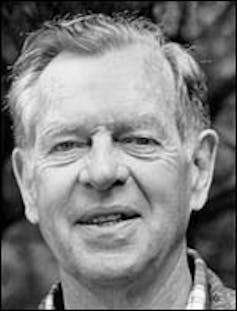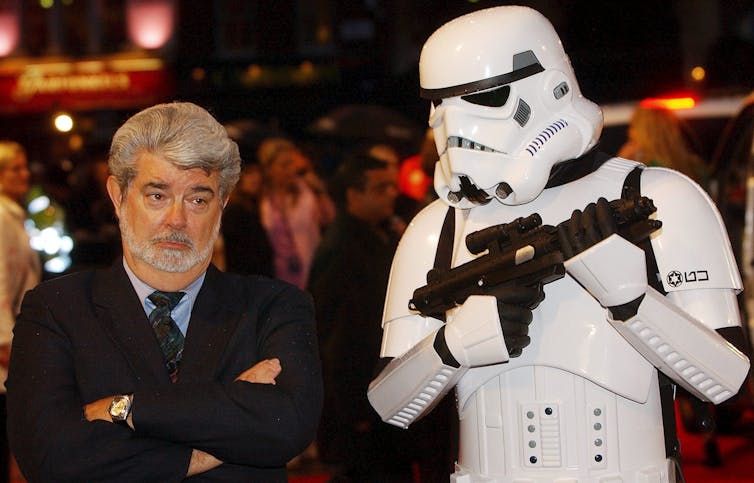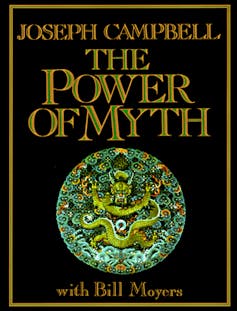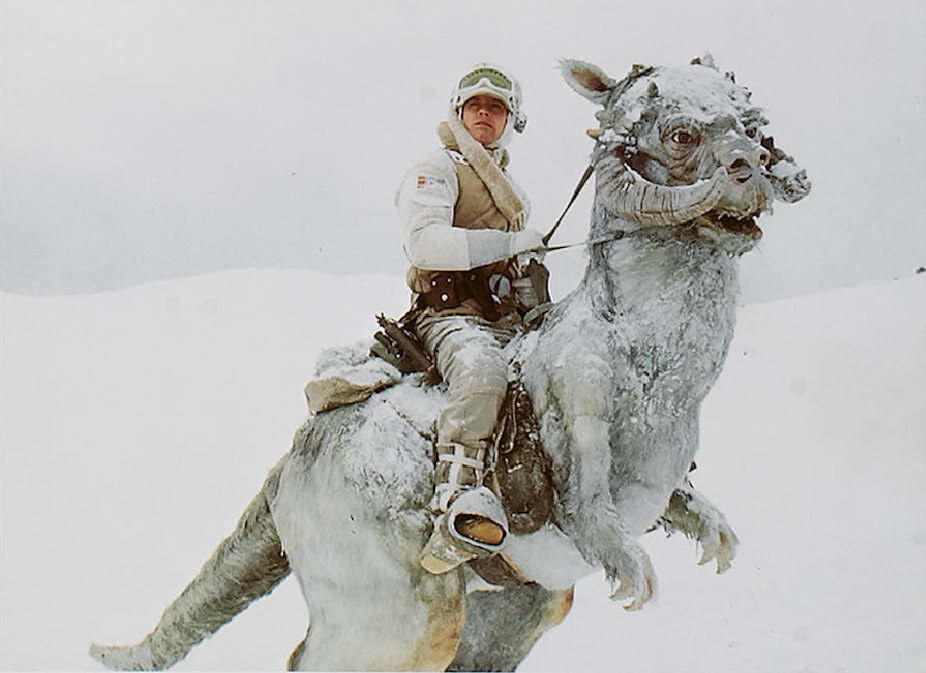When you tell someone a story, do you plan it out beforehand so that it’ll sound good? Do you carefully plot what you’ll say, in a specific order? Or does the story find a way of telling itself, the plot coming from within you – from an inherent understanding of story structure?
This is what American mythologist, anthropologist, writer and professor Joseph Campbell (1904–1987) was interested in. Inspired as a child by Native American culture and artefacts, he spent his life comparing myths and religions from around the world in an attempt to understand humanity and its fascination with stories.

This resulted in numerous publications, including the books The Mythic Image (1974), The Hero with a Thousand Faces (1949), and with journalist Bill Moyers, The Power of Myth (1988).
Throughout his writing, Campbell draws from a range of influential historical figures, including James Joyce, Thomas Mann, Pablo Picasso, Abraham Maslow, Sigmund Freud and Carl Jung. This combination of writers, artists and psychologists provides not only a rich source of inspiration for Campbell’s theories, but also strong responses to his work from a number of disciplines.
The most widely known application of Campbell’s work, particularly his book The Hero with a Thousand Faces, is to the area of film.
The Hero with a Thousand Faces
In this book, Campbell studies many hundreds of fairy tales, folk tales and legends in order to unearth a common “pattern” in the structure of stories. Campbell defines this as the “monomyth” – the typical trajectory of a story, across all cultures and religions. This monomyth is known as the “hero’s journey”.
Comprising three stages – separation, initiation and return – the hero’s journey offers a narrative framework for understanding the progression of a character, namely the protagonist. The journey, Campbell argues, usually includes a symbolic death and re-birth of the character. The religious idea of “cleansing” is also important, giving a sense of the character transforming from old to new – the character arc.
Campbell summarises the monomythic character journey as:
A hero ventures forth from the world of common day into a region of supernatural wonder: fabulous forces are there encountered and a decisive victory is won: the hero comes back from this mysterious adventure with the power to bestow boons on his fellow man.

Within this overall structure, Campbell proposes 17 story stages:
- The Call to Adventure
- Refusal of the Call
- Supernatural Aid
- Crossing the First Threshold
- Belly of the Whale
- The Road of Trials
- Meeting with the Goddess/Love
- Temptation
- Atonement with the Hero’s Father
- Peace and Fulfilment Before the Hero’s Return (Apotheosis)
- The Ultimate Boon
- Refusal of the Return
- Magic Flight
- Rescue from Without
- Return
- Master of Two Worlds
- Freedom to Live
The journey undertaken sees the character undergo both physical and emotional battles, which work together to bring them to a better understanding of their life and their place in the world. As such, the journey is full of duality – symbol and spirit; body and soul; manifest and myth; plot and story. In other words, as the character does (action), he or she becomes (character arc).
Lucas and Campbell
Hollywood filmmaker George Lucas openly declared the influence that Campbell’s theories had on his work. As American philosopher John Shelton Lawrence wrote in his paper on Campbell, Lucas and the Monomyth (2006):
In Joseph Campbell the evangelically inclined Lucas had found a kindred spirit, since the younger man also felt a mythic decline that left youth drifting without the moral anchor sensed in the heroic genre films of his own youth.

Screenwriter Keith Cunningham also talks about Campbell’s influence on Lucas’ work, noting more broadly that:
The era of the blockbuster mentality was born, and a high-concept, high-stakes approach to story development was initiated.
Cunningham’s comment is specifically about the development of the quest story – the hero’s journey being a very useful model for this type of structure.

In 1983, Lucas invited Campbell to his Skywalker Ranch in California to share with him a viewing of the completed Star Wars trilogy. Here they discussed the mythical structure employed in the films’ narratives, which led to the creation of the PBS series, The Power of Myth (1988), filmed at Lucas’ ranch.
Campbell tells Moyers in the series that as humans we purposefully probe stories in order to extract meaning that will help us move forward in life. He says that we’re seeking myths (themes; meaning) within manifestations (films; stories). For Campbell, the remnants of mythology “line the walls of our interior systems of belief, like shards of broken pottery in an archaeological site”.
This series was eventually published as a book of the same name, further connecting Campbell’s work with that of film.
The Writer’s Journey
Some years later, in the early 1990s, screenwriting author Christopher Vogler studied Campbell’s work at the University of Southern California. Vogler was already working in Hollywood, as a story analyst, and began to see strong connections between the monomythic hero’s journey and the piles of scripts and stories he was reading day in, day out.
Vogler decided to create a short summary document of how he saw Campbell’s work in relation to Hollywood. It was intended initially for just himself and his story analyst friends working in the studios – but the response was so overwhelming that he was encouraged to turn the summary into a more official guide.
What emerged was The Writer’s Journey (2007), one of the most successful screenwriting books of all time and still extremely popular with today’s students, writers and industry professionals.
In the book, Vogler adapts Campbell’s 17-stage monomyth into a 12-stage model for mapping the hero’s journey in film. This translates as:
- Ordinary World
- Call to Adventure
- Refusal of the Call
- Meeting with the Mentor
- Crossing the First Threshold
- Tests, Allies, Enemies
- Approach to the Inmost Cave
- Ordeal
- Reward
- The Road Back
- Resurrection
- Return with Elixir
The success of The Writer’s Journey has certainly kept the work of Campbell alive. Vogler is honest about his inspiration from The Hero with a Thousand Faces, and like all scholarship his book became an extension of the original – a new way of applying prior research.
I followed this trajectory myself when I went back to Campbell’s work to help expand Vogler’s model, differentiating between the character’s physical journey and emotional journey. This became the basis for the book Movies That Move Us: Screenwriting and the Power of the Protagonist’s Journey (2011).
Although Joseph Campbell died more than 25 years ago, he is still heralded as one of the great story theorists and his work is studied and applied in practice around the world.
So when you next tell a story and find yourself structuring it in a particular way, think about how and why you’re doing it. And if you haven’t read Campbell’s work, try it and see whether you think his ideas were on the mark.
See if it’s true or not that despite the story you’re telling, you’re always framing it in a monomythic way – as some kind of hero’s journey.

